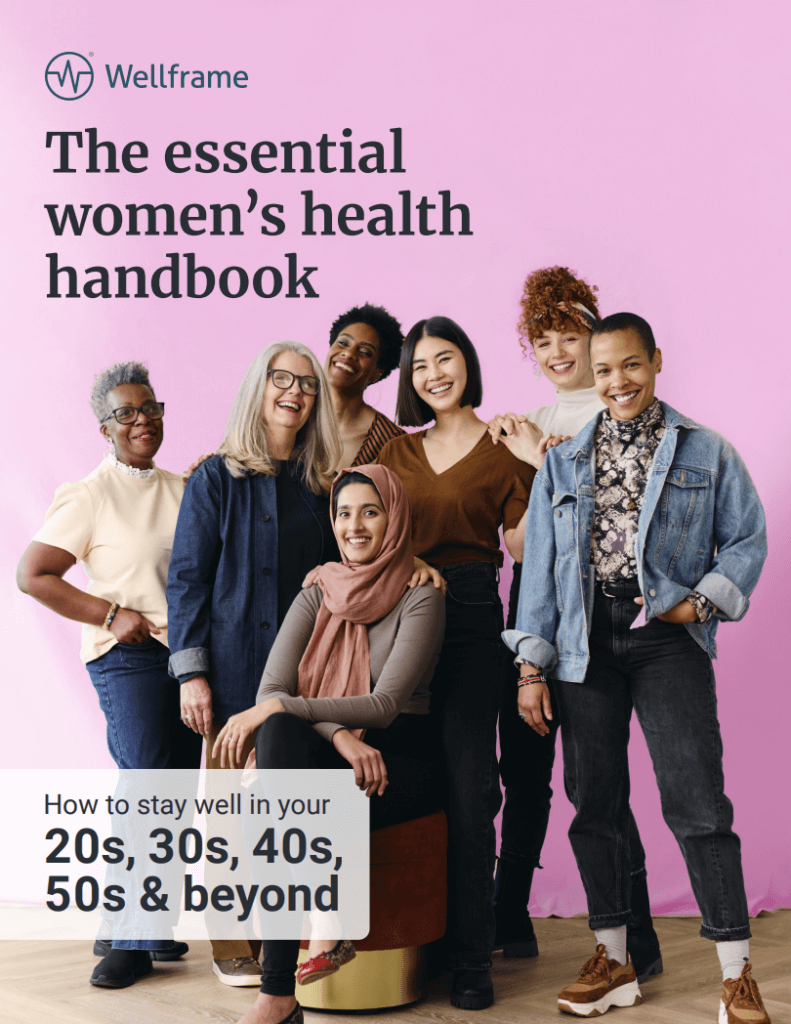5 common health conditions that affect women more than men
Knowing your risk for some of the conditions that affect women more than men is the first step toward preventing them.
Some health conditions affect men sand women equally. Heart disease and cancer, for example, are top causes of death for both men and women. But women are more likely to be affected by certain other diseases. Why?
It can often be traced back to sex hormones such as estrogen, says Betul Hatipoglu, M.D. Dr. Hatipoglu is an endocrinologist and director of the Diabetes, Obesity and Metabolism Center at Case Western Reserve University School of Medicine.
Here is a look at some of the conditions women are at higher risk of developing. Plus, what you can do to prevent them.
Need to schedule a screening? A digital health management app like Wellframe makes it easy to connect with your care advocate to book an appointment. Many health plans offer Wellframe to their members as a benefit at no extra cost. To find out if yours does, reach out to your human resources department.
Heart disease
Women are more than twice as likely as men to die after a heart attack. Some physicians still miss signs of a heart attack in women, Dr. Hatipoglu notes. Another reason: “Women don’t go to the emergency room as fast as men, which causes delays in care,” says Dr. Hatipoglu.
That may be in part because women’s heart attack symptoms aren’t always the “classic” signs that are seen in men. For instance, women are less likely to have chest pain than men. And they’re more likely to have shortness of breath, nausea, or jaw pain. Plus, women’s symptoms can come and go or develop more slowly. As a result, it can take longer to realize it’s something more serious than, say, indigestion.
What to do: If you have any risk factors for heart disease, get treated for them, says Dr. Hatipoglu. That includes things like type 2 diabetes, high cholesterol and high blood pressure.
Did you have gestational diabetes or high blood pressure during pregnancy? Make sure that you have a care plan in place after delivery. “These conditions can linger and put women at high risk of a heart attack or stroke later on in life,” says Dr. Hatipoglu.
Also important: Know the symptoms of a heart attack. They may look different in women than in men. The most common sign is chest pain. But women are more likely to also have:
- Shortness of breath.
- Nausea and vomiting.
- Back or jaw pain.
If you notice these symptoms, don’t wait to call 911.
Thyroid disease
Women are 5 to 8 times more likely than men to have a thyroid problem. The thyroid is a gland in your neck that makes thyroid hormone. This hormone controls many functions in your body, such as:
- Breathing.
- Heart rate.
- Weight.
- Digestion.
- Mood.
- Energy levels.
Problems can happen when the thyroid makes too much thyroid hormone (hyperthyroidism) or too little (hypothyroidism).
It’s not clear why women are more likely to have thyroid problems, says Dr. Hatipoglu. As mentioned before, estrogen may be a factor. Thyroid issues can happen at any age. But they are more likely to start right after you give birth or go through menopause.
What to do: Know the symptoms of thyroid disease. The main sign of hypothyroidism is feeling tired. Other symptoms include:
- Feeling cold.
- Constipation.
- Muscle weakness.
- Joint or muscle pain.
- Feeling sad or depressed.
- Pale, dry skin.
Signs of hyperthyroidism include:
- Weight loss.
- Increased hunger.
- A fast heartbeat.
- Sweating.
- Period changes.
Your doctor can diagnose thyroid disease through blood tests. If your tests are normal, Dr. Hatipoglu recommends getting screened for other autoimmune diseases. Some that are common in women include:
- Lupus.
- Sjögren’s syndrome.
- Rheumatoid arthritis
These all may cause similar symptoms to thyroid problems.
Osteoporosis
About 80% of people who have osteoporosis are women. It’s a health problem that causes your bones to weaken.
Women are more likely to get it because they have smaller, thinner, less dense bones than men. Hormonal changes during menopause also lead to a loss of bone density, says Michael Green, M.D., an Ob-Gyn in Lake Arrowhead, California, and co-founder at Winona, an anti-aging wellness center.
What to do: Osteoporosis usually doesn’t have symptoms, especially in its early stages. So, it’s important to stay up to date on screenings.
The general recommendation is to get a bone mineral density test if you are 65 or older. You may want to get one as early as age 50 if you have risk factors such as:
- A family history of osteoporosis.
- Health conditions such as diabetes, celiac disease, or depression.
- Taking certain medications, such as steroids, that can cause bone loss.
Here’s how you can lower your risk of osteoporosis:
- Get enough calcium. You need 1,000 mg if you are under 50, and 1,200 mg after that.
- Stay active. Do weight-bearing activities such as running, walking, and weightlifting.
- Stay away from smoking and alcohol.
Depression and anxiety
One in 8 women go through depression in their lifetime. That’s twice as many as men. This is probably due to shifts in hormones (especially around your period, pregnancy, and perimenopause), as well as genetics, says Dr. Green. Women are also more likely to have stress. And that can also lead to depression.
What to do: You don’t want to ignore depression. It’s been linked to other health conditions such as heart disease, obesity, and cancer. Let your doctor know if you have any of these symptoms for more than 2 weeks:
- Feeling sad or down.
- Loss of interest in activities you once liked.
- Low energy.
- Trouble staying focused.
- Difficulty sleeping.
- Overeating or undereating.
- Thoughts of hurting yourself.
- Irritability.
Your doctor can refer you to a mental healthcare provider for talk therapy. They can also prescribe medicines, such as antidepressants.
Remember: As a woman, you may have a higher chance of getting these conditions. But that doesn’t mean you will get them. Knowing your risks can inspire you to take steps to lower them. And to get treatment right away if needed.
To learn more ways to be sure you’re getting the best possible health care, sign up to receive our free Well & Wise newsletter.
Interested in learning how to live well at every age?
Download the Essential Women’s Health Handbook for a comprehensive guide on the health check-ups and screenings every woman should be scheduling. Plus, learn common symptoms of a heart attack, stroke, and stress so you can take immediate steps if they occur.

